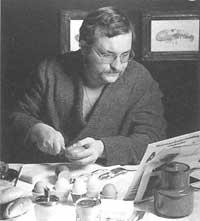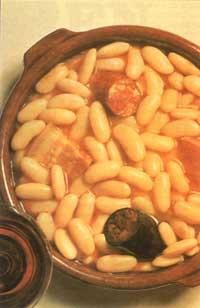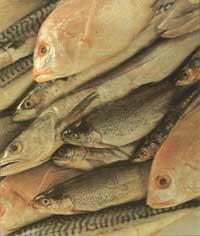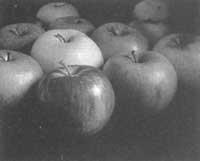 |
Food has changed a lot in developed countries. We have gone from lack of food to exaggeration. At first glance, you might think that the nutritional problem is solved, but the reality is something else.
 |
 |
 |
 |
 |
 |
 |
 |
 |
 |
It is important to maintain balance. Each meal should adapt to this balance. |
 |
|
 |
 |
 |
 |
 |
 |
 |
 |
 |
 |
 |
 |
 |
 |
Formerly we had problems with the sick of deficiencies. However, the current ones are related to excess and high calorie consumption. High consumption of certain foods, especially fats, alcoholic beverages. ... . . is related to degenerative diseases such as heart, obesity, diabetes, etc.
On the other hand, we already know what are the substances that make up the food, what is the path that they follow through our organism and what are most of its functions.
Humans need to ingest different substances to restore cells, function, and keep them healthy. These substances are classified into two groups:
- Very consumed:- Water - Carbohydrates - Fats - Proteins
- Little taken - Mineral salts - Vitamins
All are necessary. If we don't take enough, or if we take it too much, it can cause us discomfort. That is why it is important to try to maintain this balance. Each meal should adapt to this balance.
Foods contain these substances. Milk, for example, contains many substances of this type, but not all. Meat also has many substances, but not all. And so with all food. Some contain many substances from one another. And if we want to complete food we have to eat everything so that others fill the gaps of a food.
On the other hand, customs are also changing. In developed countries, especially in large cities, throughout the week one in four people make five meals away from home: schools, nurseries, university dining rooms, restaurants... Many others perform all meals in barnetegis, in elderly residences, ... The importance of proper preparation of meals is more evident in these cases, since the number of people who feed is higher.
 |
 |
 |
 |
 |
 |
 |
 |
 |
 |
The time between food preparation and consumption is short in domestic food. In collective food this is impossible. |
 |
|
 |
 |
 |
 |
 |
 |
 |
 |
 |
 |
 |
 |
 |
 |
Below I would like to mention one of the most outstanding differences between domestic and collective food. The time between food preparation and consumption is short in domestic food (This is also changing). In the collective food this is not possible, and once cooked the food is cooked, heated or kept warm before consumption. As we will see later, this has its influence on food.
| Food composition table and recommended intake table |
 |
 |
 |
 |
 |
To take this into account, the problem presented to us has been measured in the adequacy of food. There are different ways to achieve this.
- Stages: 1. Weighing raw components, prepared parts and sands. 2. Food processing. For this purpose, chemical analysis and food composition panel would be used.
- RECIPES Stages:1. Use of domestic measures. 2. Food processing. We would rely on tables.
This second way seems more useful to us, since it would give us enough information and the cost would not be so high.
Before continuing, it would be advisable to consider some considerations:
- The composition of any food, and especially mineral salts and vitamins, varies depending on the treatment you have suffered. Through routes, the composition of vegetables varies depending on the variety, the type of cultivated land, the fertilizers that have been banished, the time of arrival in the kitchen, etc. Therefore, the values that appear in the tables are relative and should be considered orientative.
- If we analyze the tables of different entities, we can find different data for the same foods. That should not surprise us either. Each has used different methods of analysis, different varieties, .. but they should coincide in the richness of certain foods, comparing them with others.
- Finally, a note on intake or intake recommendations. The recommended amounts exceed the minimum requirements (15% on average). This is intended to compensate for individual changes.
 |
 |
 |
 |
 |
 |
 |
 |
 |
 |
Proteins obtained from animals, fish, milk and eggs will be better than those obtained from other foods. |
 |
|
 |
 |
 |
 |
 |
 |
 |
 |
 |
 |
 |
 |
 |
 |
Getting figures from the tables is easy. But it is not so easy that these figures have an exact measurement of reality. Therefore, the next step is to define the indexes. These indexes serve us to investigate the entire diet. If we want to do a food research, we must modify the data of the intake recommendations. The most expressive and necessary indexes for a correct assessment of the quality of the diet would be:
1. Energy and nutrients from the menu
The energy needed by the organism is obtained through the oxidation of nutrients within the cell. This energy is produced by three of the nutrients mentioned above. Each of them generates:
- 3.75 kilocalories per gram of carbohydrates
- 4 kilocalories per gram of protein
- a gram of fat 9 kilocalories
2. Percentage of energy obtained from the main nutrients
This indicator is very important. The recommendations indicate that between 12 and 15% of the total energy of proteins should be obtained, that the energy obtained from fats should not exceed 30% and that the remaining 60% should be obtained from the carbohydrates.
The following operations should be performed to obtain this data:
a. PERCENTAGE OF ENERGY OBTAINED FROM PROTEINS Grams of protein. 4 x100 all kilocalories x100
b. PERCENTAGE OF ENERGY OBTAINED FROM FATS Grams of fat. All kilocalories 9 x100 x100 c. PERCENTAGE OF ENERGY OBTAINED FROM CARBOHYDRATES Grams of carbohydrates. 3,75 x100 All kilocalories x100
3. Diet quality index
The quality index of the diet is obtained by dividing. The numerator is the amount of nutrients it provides every 1,000 kilocalories from menu and the denominator is the need for nutrients we have for every 1,000 kilocalories. If this index is higher than one for all nutrients, it indicates that the composition of the diet is correct. Table 1 shows normal nutrient values per thousand calories.
4º Empty calories
If we take too many sugars, alcoholic beverages, refined fats and fats, it will be impossible to create essential menus. These foods do not contain vitamins or mineral salts. To perform the evaluation of the menu we need to know the amount of them.
5. FIBER
Some substances present in plants cannot be digested by our liserial enzymes. They are called fibers and lack of fiber is related to diseases such as constipation, large intestine cancer, ... Recommendations indicate that we should eat between 25 and 30 grams daily, ie 10 grams per 1,000 kilocalories.
6° Unsaturated fats/saturated fats
Some research suggests that unsaturated fats influence the amount of cholesterol. Reduce. On the contrary, saturated fats increase. The operation we will perform to achieve the relationship between the two is as follows:
Fish fats + vegetable fats animal fats <unk> Fish fats
7. Protein quality
 |
 |
 |
 |
 |
 |
 |
 |
 |
 |
Make a varied diet, mainly increasing the consumption of vegetables and fruits, legumes and whole nuts. |
 |
|
 |
 |
 |
 |
 |
 |
 |
 |
 |
 |
 |
 |
 |
 |
Proteins are amino acid polymers. If the composition of amino acids in proteins is similar to proteins in the body, the quality of the diet will be higher. Therefore, the proteins obtained from animals, fish, milk and eggs will be better than those obtained from other foods.
The operation to obtain the protein quality index will be:
Animal proteins + legume proteins all proteins
Finally, once the indexes are defined, we will indicate the recommended values of those indexes (see table 2).
When organizing meals for:
- Adapt the energy received to the maintenance of the ideal weight.
- Increase the consumption of fish and vegetables.
- Reduce the consumption of saturated fats.
- Limit sugar intake.
- Limit the consumption of alcoholic beverages.
- Make a varied diet, mainly increasing the consumption of vegetables and fruits, legumes and whole nuts.
|

